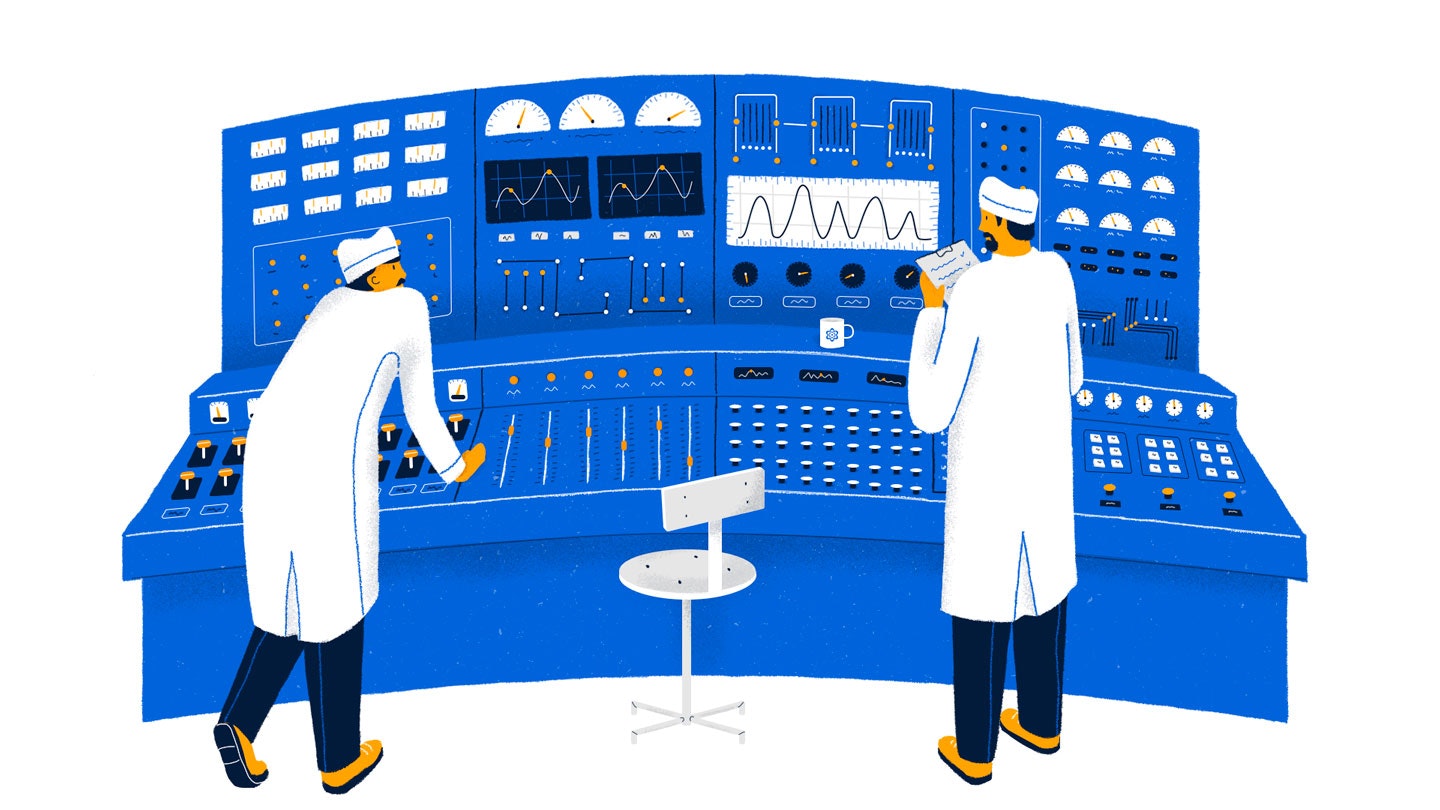In today's digital age, the need for web applications that offer excellent user experience (UX) is greater than ever before. It's not just about building an application that works; it's about building an application that engages, delights, and delivers results.
According to a report by Forrester Research, a well-designed user interface could increase a website's conversion rate by up to 200%, and a better UX design could yield conversion rates of up to 400%. As businesses strive to improve their online presence and customer engagement, web app design services provided by UX agencies have become invaluable.
Best Practices
A successful web application design is about striking the right balance between aesthetics, functionality, and user-friendliness. Here are some best practices to consider when designing a web application:
User-Centered Design (UCD): Start with a thorough understanding of your target audience. Understand their needs, preferences, and pain points to create an interface that resonates with them.
Simplicity is Key: Simplicity leads to usability. Avoid cluttering the interface with too many elements. Keep the design clean and intuitive, making it easier for users to navigate and find what they're looking for.
Consistency and Familiarity: Maintain a consistent design throughout the application. Familiar UI elements and consistent behavior make users feel comfortable and confident while navigating your app.
Mobile-Friendly Design: As mobile users continue to increase, it's essential to create a responsive design that looks and functions well on all screen sizes and devices. This includes optimizing touch controls and ensuring that images, text, and other elements scale appropriately.
Optimize Performance: Slow-loading web applications can frustrate users and lead to abandonment. Prioritize performance optimization techniques such as reducing image file sizes, minimizing the use of heavy scripts, and utilizing content delivery networks (CDNs).
Feedback Mechanisms: Incorporate feedback mechanisms like tooltips, progress indicators, and confirmation messages to guide users through the interface and inform them of the outcome of their actions.
Accessibility and Inclusivity: Make your web app inclusive and accessible to everyone, including users with disabilities. Use color contrasts that are easy to read, incorporate keyboard navigation, and provide alternative text for images.
Testing and Iteration: Regularly test your web app with real users to identify potential usability issues. Continuously iterate on the design based on user feedback and usability testing results.
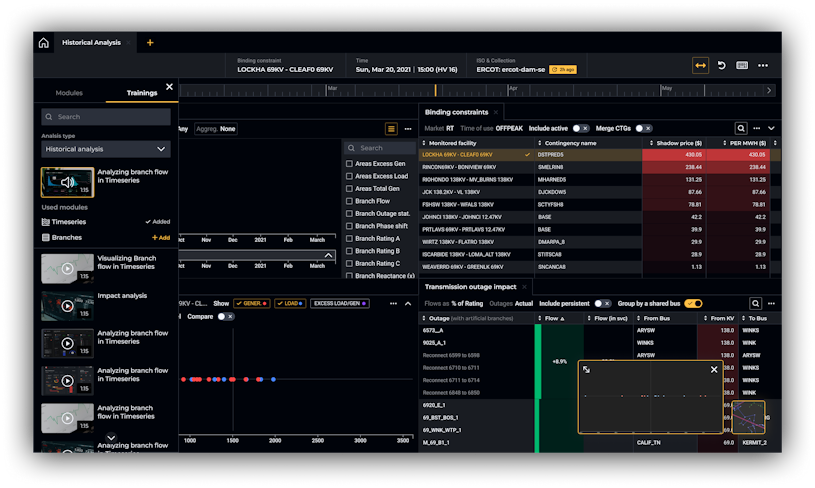
Example of a web app screen we designed.
The Role of User Research in Web App Design
Understanding the Target Audience
A deep understanding of your target audience is the secret to a successful web app design. This is why you have to define user personas and identify their specific needs and pain points; using that, you can create a web app that truly resonates with your intended users.
Defining User Personas
User personas are made-up characters that represent your ideal users. Detailed personas lead to gaining empathy for your users and making informed design decisions that can improve their experience while using your web app.
Key attributes to include in the user persona are:
Demographics: Age, gender, location, occupation, income
Goals: What they want to achieve with the web app
Behaviors: How they use technology
Frustrations: Pain points and challenges they face
Motivations: What drives them to use the web app?
Conducting User Research
Once you have a solid understanding of your target audience, it's time to delve deeper into their needs and preferences through user research. You must consider this approach if the goal is to design a web app that solves their problems and provides a seamless user experience.
User Interviews
User interviews provide valuable qualitative insights. Through one-on-one conversations with the potential users of your web app, you can better understand their thoughts, feelings, and motivations. Key benefits of user interviews include:
Uncovering hidden needs: Users may not always articulate their needs explicitly.
Exploring complex issues: In-depth discussions can help uncover nuanced problems.
Building rapport: Direct interaction fosters trust and encourages honest feedback.

Surveys
Surveys are a quantitative research method used to collect data from a large number of participants. You can gather valuable insights into user preferences and satisfaction levels by distributing surveys through email, social media, or in person.
Key benefits of surveys include:
Scalability: Reach a large number of participants.
Quantifiable data: Analyze data statistically to identify trends and patterns.
Quick and efficient: Collect data efficiently and analyze it using statistical software.
Usability Testing
Usability testing involves observing users as they interact with the web app to identify usability issues and gather more feedback. You can identify areas of confusion, frustration, and inefficiency simply by watching users navigate your app.
Key benefits of usability testing include:
Identifying usability issues: Uncover problems users may encounter.
Gathering qualitative feedback: Understand users' thoughts and emotions.
Iterating on the design: Refine the design based on user feedback.
These research methods, when done correctly by an expert team like ours, help you gain a comprehensive understanding of your users and create a web app that exceeds their expectations.
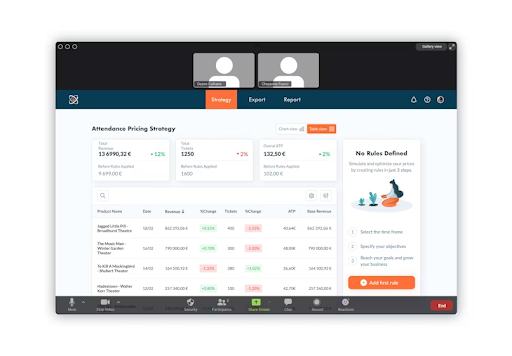
Usability testing example
Incorporating User Insights into Your Web App
After you've gathered valuable insights from user research, the next step is to incorporate them into the design process of the web app.
Iterative Design Process: The iterative design process is a cyclical approach that involves continuous testing and refinement. The following steps lead to creating a user-centered product:
Research: Conduct user research to understand user needs and preferences.
Design: Create initial design concepts based on research findings.
Prototype: Develop low-fidelity prototypes to test basic functionality.
Test: Conduct usability testing to identify usability issues.
Iterate: Refine the design based on feedback from testing.
Repeat: Continue the cycle of testing and iteration until the design meets user needs.
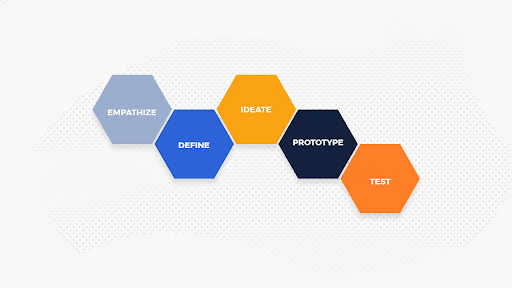
Prioritizing User Feedback: User feedback is invaluable, but not all feedback is created equal. We prioritize feedback based on how it impacts the user experience and business goals. Consider the following factors:
Severity: How significant is the issue?
Frequency: How often does the issue occur?
Impact: How does the issue affect user satisfaction and task completion?
Alignment with business goals: Does addressing the issue align with your product vision?
Creating Intuitive Navigation
Once you have a solid information architecture, the next step is to create intuitive navigation that guides users effortlessly through your web app. This is very important, as navigation is responsible for many of the UX complaints of web app users.
Clear and Concise Labeling: Clear and concise labeling is important for effective navigation. Use clear and descriptive labels for menu items, buttons, and other interactive elements. Avoid jargon and technical terms that may confuse users.
Familiar language: Use language that is easy to understand and relatable to your target audience.
Be consistent: Use consistent terminology and phrasing throughout your app.
Prioritize important actions: Place the most important actions prominently on the screen.
Logical Information Hierarchy: A well-structured information hierarchy helps users understand the relationship between different content items. Organize your content in a logical and hierarchical manner, from general to specific.
Use a clear and concise navigation structure: Avoid overly complex navigation menus.
Prioritize content: Highlight the most important content.
Use visual cues: Use visual cues like headings, subheadings, and bullet points to organize content.
Focus on helping users find what they need quickly and easily to reduce frustration and improve the overall user experience.
How to Enhance the User Experience of a Web App
A well-designed web app should minimize cognitive load and improve findability. That's the whole point of the intuitive design approach.
Cognitive Load: Cognitive load refers to the mental effort required to process information. To reduce cognitive load, consider the following:
Keep it simple: Avoid cluttering the interface with unnecessary elements.
Use familiar patterns: Adhere to established design patterns and conventions.
Provide clear instructions: Use simple language and avoid jargon.
Break down complex tasks: Divide complex tasks into smaller, more manageable steps.
Improving Findability: Findability refers to the ease with which users can locate information within your web app. To improve findability, consider the following:
Clear and consistent labeling: Use clear and consistent labels for navigation elements.
Effective search functionality: Implement a robust search function that allows users to quickly find what they need.
Visual cues: Use visual cues like color, typography, and icons to guide users' attention.
Contextual search: Provide search suggestions based on the user's current context.
Reducing cognitive load and improving findability ensures we create a more user-friendly and enjoyable web app experience.
Our Experience Designing Web Apps
We pride ourselves on our extensive experience in designing web applications. Our approach is rooted in a deep understanding of user needs, ensuring that every design decision enhances the user experience. Our process begins with a thorough audit of the current product, mapping out user journeys, and developing a UX strategy plan.
We then move on to conceptualizing solutions, conducting usability testing sessions, iterating based on feedback, and finalizing high-fidelity UI designs. This meticulous approach ensures that our designs are not only visually appealing but also functional and user-friendly.
Sciforma: Unifying Complex Systems
The Sciforma case study focused on merging two distinct resources and project management pieces of software into one. Our efforts led to a complete product redesign and the creation of a unified design system. Through our processes, we audited legacy designs while developing new UX solutions, resulting in enhanced customer satisfaction and increased retention.
Some results:
Screens Designed: 279
Usability Issues: 90% uncovered
User Research Findings: 192
Customer Satisfaction: Increased from 3 to 8
Design Recommendations: Over 100
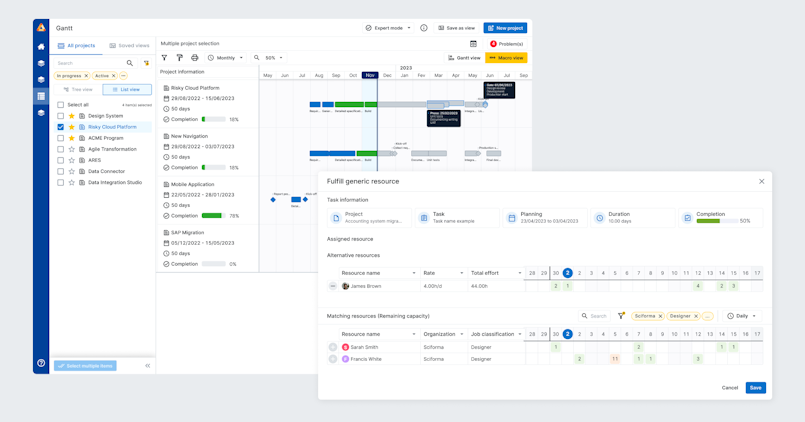
Aliaswire: A Case Study in UX Transformation
Aliaswire, a fintech platform, faced challenges in providing a user-friendly experience for its diverse user base, plus the platform needed to be flexible enough to accommodate future changes. Our team addressed these challenges and more, by improving the information architecture and designing intuitive user flows. We successfully transformed the platform into an efficient user experience by focusing on user needs and leveraging design best practices.
Key results:
Higher user adoption rates and increased engagement.
More efficient and effective user workflows.
A more professional and modern brand image.
Timely and successful launch of the redesigned platform.
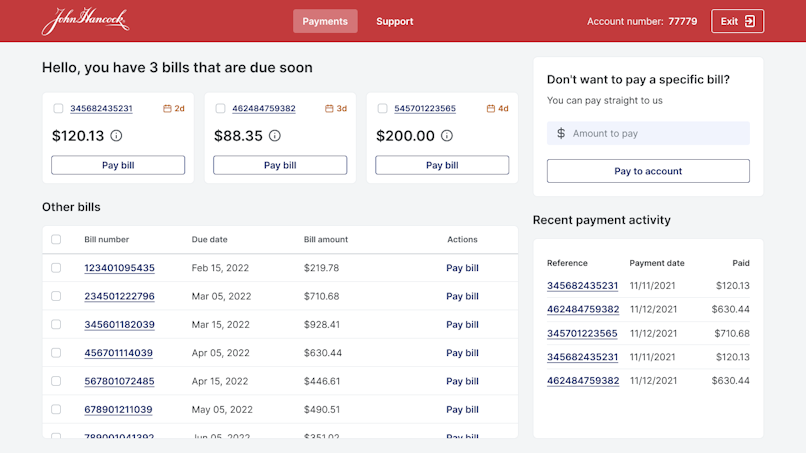
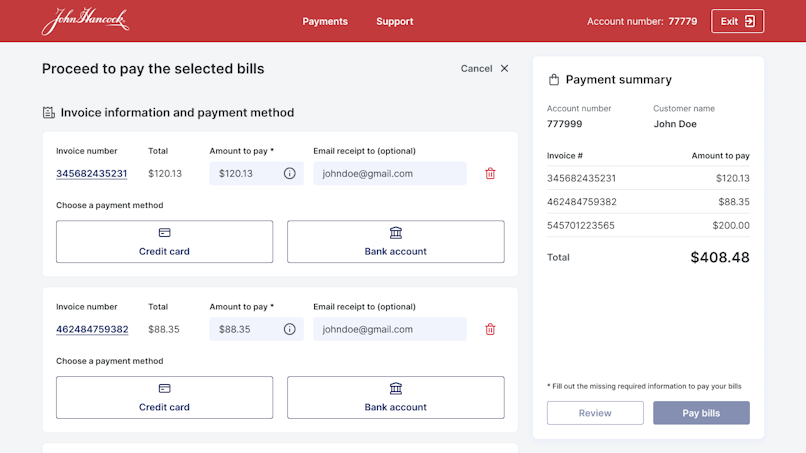
Finished designs for Aliaswire
Captivate: A Platform Reimagined
An event management platform, Captivate, aimed to modernize its legacy system and cater to a broader range of events, including hybrid, online, and offline formats. Our team was tasked with designing a new platform to enhance usability and empower users to create and manage events conveniently. Although the platform's future direction and specific features were still being defined and striking a balance between UX and business objectives was tricky, our expert team adopted an effective user-centered design approach. This involved creating a clean and intuitive interface to simplify event creation and management. We also provided a variety of customizable templates to suit different event types.
Key Outcomes:
Improved user satisfaction and reduced frustration.
Simplified the process of creating and managing events.
Encouraged wider adoption of the platform.
Optimized the platform for faster load times and better performance.
Created a flexible and scalable platform to accommodate future growth and evolving needs.
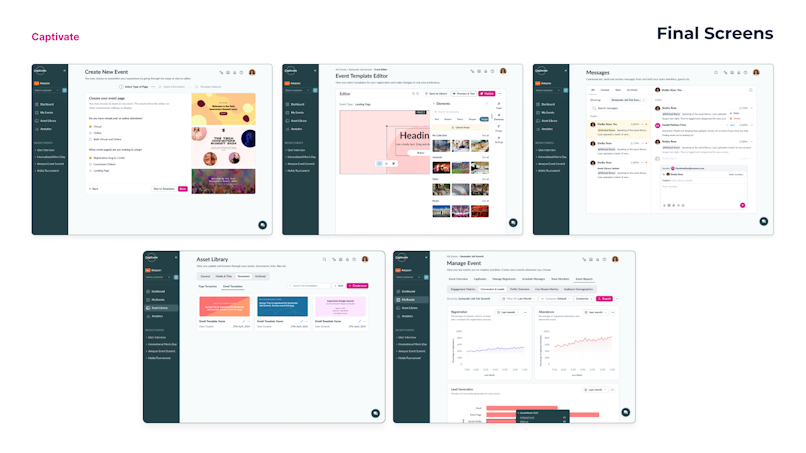
Finished designs for Captivate
Additional experience
Beyond individual projects, our commitment to excellence is evident in the way we handle complexity. For instance, we've tackled challenges like merging two ERP systems into one, catering to products with multiple users, personas, and requirements. Our expertise lies in improving information architecture, ensuring that our designs are intuitive and meet the diverse needs of our clients and their users.

Web App Projects We Completed
Web Apps is our specialty. Check our case studies and see for yourself.
See more case studies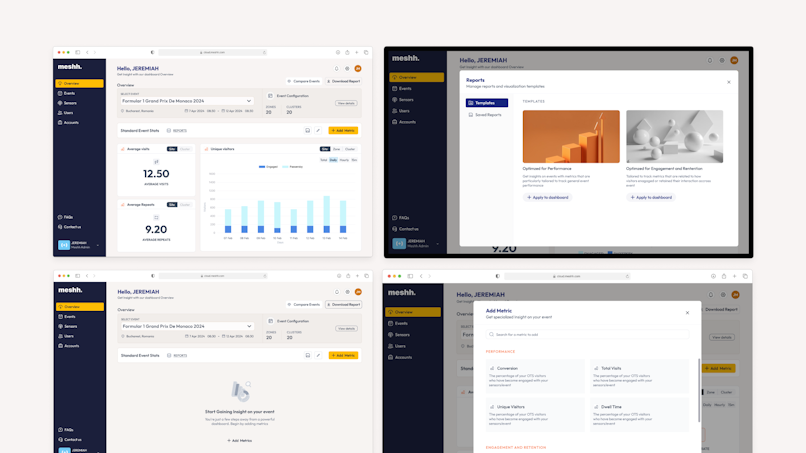
Struggling with a low-performing web app?
Our expert designers can help transform your business.
Schedule a free consultation todayThe Future of Web App Design
Covering the standard best practices is not enough; it's worth noting that the design industry is fast evolving with new emerging technologies and practices. Modern web app design has to accommodate these recent developments to meet the expectations of modern users.
AI and Machine Learning
AI and machine learning have arguably had the biggest impact on web apps. Not only have they revolutionized the way we design and develop web apps, but they also provide innovative features that take user experience to new levels.
Personalized User Experiences: By analyzing user behavior and preferences, AI can help us tailor the user experience to individual needs. This may include personalized recommendations, customized UI layouts, and dynamic content.
Predictive Design: AI-powered predictive design can anticipate user needs and proactively offer solutions. This leadS to more efficient and intuitive user experiences.
Voice Interfaces
Voice interfaces are becoming increasingly popular, allowing users to interact with web apps using natural language.
Voice-Controlled Apps: Voice-controlled apps enable users to perform tasks hands-free, making them ideal for multitasking and accessibility.
Natural Language Processing: Natural language processing (NLP) allows web apps to understand and respond to human language, making interactions more natural and intuitive.
Augmented Reality and Virtual Reality
AR and VR technologies are opening up new possibilities for immersive and interactive web app experiences.
Immersive User Experiences: AR and VR can transport users to virtual worlds, creating highly engaging and immersive experiences.
Spatial Computing: Spatial computing enables users to interact with digital content in physical space, blurring the lines between the digital and physical worlds.
As technology continues to evolve, we can expect to see even more innovative and exciting web app designs in the future. Staying up-to-date with the latest trends and working with an AI UX design agency can help you create cutting-edge web apps that delight users and drive business success.
Measuring UX Success
Significant time and resources go into making a functional web app. Understandably, it's important to assess the performance of the completed designs and evaluate how they impact your business. That is where tracking UX metrics plays a huge role. We have written a detailed article on how to measure the success of a UX design agency to help you evaluate the results you get.
Outro
As competition in the digital landscape intensifies, businesses must prioritize providing exceptional user experiences through well-designed web applications. By following best practices and partnering with a reputable UX agency, businesses can achieve greater user satisfaction, increased engagement, and higher conversion rates.
Through a holistic approach that focuses on understanding users, simplifying design, ensuring consistency, optimizing performance, and conducting thorough testing, web app design services hold the key to creating memorable and impactful online experiences.

